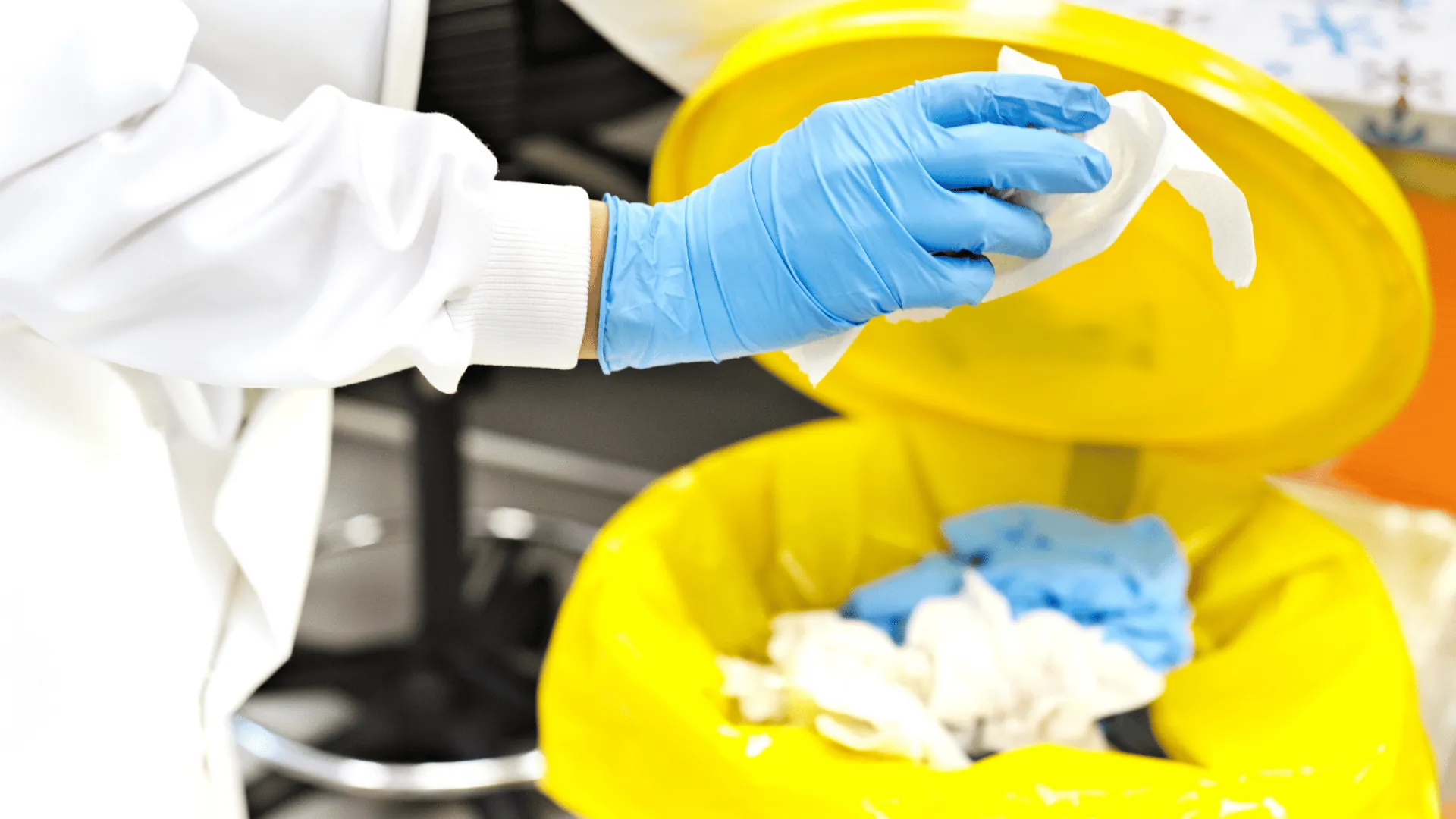Medical waste disposal isn’t optional. Whether you’re running a clinic, a vet office, or a university lab, handling waste the right way is non-negotiable. But here’s the reality: it can also be expensive. And in an industry where safety and compliance come first, cutting corners isn’t an option.
The good news? You can cut costs, responsibly. From optimizing your pickup schedule to training your team and rethinking how waste is handled on site, there are practical ways to spend smarter without sacrificing safety.
Below, we break down proven strategies to help you reduce costs on medical waste disposal services while staying compliant, protected, and in control.
Understanding Medical Waste and Its Cost Drivers
What Is Medical Waste?
Medical waste isn’t just one thing, it’s a catch-all for the messier side of medicine. We’re talking about bloodied gauze, used syringes, tossed-out meds, gloves that have seen better days, and yes, even tissue and fluids no one wants to think about too long. Depending on what you’re dealing with, it might fall under biohazardous, sharps, pathological, or pharmaceutical waste. Each comes with its own set of rules, and none of it can be handled like everyday trash.
What Makes It Expensive?
Costs add up fast due to strict regulations from agencies like OSHA and the EPA, as well as state-specific laws. Add in the need for proper labeling, sealed containers, reliable transportation, and certified treatment (like autoclaving or incineration), and it’s clear why pricing can climb. The frequency and volume of pickups also play a big role, more pickups typically mean more dollars out the door.
1. Perform a Waste Audit
Think of a waste audit as your diagnostic tool. You can’t treat the problem if you don’t know where the waste is coming from, or how much of it you’re generating.
Start by tracking the types and volumes of waste being disposed of over a typical week or month. Pay attention to which areas or departments produce the most. You may find that some items being tossed in regulated containers don’t belong there at all. With that knowledge, you can start reducing unnecessary volume and making smarter service decisions.
2. Segregate Waste Properly
One of the biggest mistakes we see? Over-classifying waste.
Throwing non-regulated items into red bags or sharps containers is like tossing money in the trash. PPE, paper towels, and packaging materials are common culprits. When staff don’t know the difference, or aren’t paying attention, it can lead to inflated pickup costs and compliance headaches.
Clear signage, container labeling, and regular reviews of disposal practices go a long way here. The goal isn’t just following the rules, it’s avoiding the financial penalties that come with missteps.
3. Train Staff and Build Awareness
Even the best systems fail without buy-in.
Your team needs to understand not just the how, but the why. Ongoing training helps ensure consistency, accountability, and fewer costly errors. Make education part of your onboarding and create quick-reference materials for daily use. Assign someone the role of waste compliance lead, so there’s always a go-to person for questions.
4. Optimize Pickup Frequency
Waste pickup isn’t one-size-fits-all. If your volume has changed but your schedule hasn’t, you might be paying for empty bins.
Review historical data, track how fast containers fill, and compare usage across locations if applicable. Matching your pickup schedule to actual need, not assumptions, can lead to immediate savings. Many vendors (including our team here at EcoMed) will work with you to right-size your service plan.
5. Shop Around and Compare Vendors
Not every vendor plays it straight. Some roll hidden fees into flat rates or tack on surprise charges for things that should’ve been included in the first place. That’s why it pays to dig deeper, ask for itemized quotes, press for clear service breakdowns, and don’t settle for vague terms or dodged questions. Local and regional providers tend to be more transparent and responsive than the big-box names, but even then, it depends on who you’re dealing with.
Here at EcoMed, we keep things simple: no smoke, no mirrors, just straightforward pricing, responsive service, and a team that actually picks up the phone when you call. If you’re ready to stop guessing and start saving, we’re here to help.
6. Consider Consolidating Services
If you’re using different vendors for sharps, pharmaceuticals, and red bag waste, you’re probably overcomplicating things, and overpaying. Bundling these services under one provider can unlock volume discounts and reduce administrative complexity.
Bonus points if that provider also offers compliance training, digital documentation, and support when regulations change. One invoice, one team, and fewer headaches.
7. Use Reusable Containers Where Appropriate
Single-use containers might feel like the easy button, use it, toss it, move on, but that convenience comes with a price tag that keeps growing. Reusable containers, on the other hand, are the long game. They can cut costs, shrink your environmental footprint, and still handle the heavy lifting when it comes to sharps and biohazard waste.
Of course, it’s not just about swapping lids and calling it a day. Reusables need to meet strict regulatory standards and be properly cleaned and sanitized between uses. That’s where our team comes in. We’ll walk you through the pros, the pitfalls, and whether reusables actually fit your workflow, no upsell, just real advice.
8. Stay Compliant to Avoid Penalties
Saving money is smart. Risking a fine that could wipe out your savings? Not so much.
One misstep in compliance, an unlabeled bag, a skipped log, a poorly trained staff member, and you’re staring down thousands in penalties and a whole lot of headache. The good news? Staying ahead of the rules isn’t just about playing it safe. Regular audits, refreshed training, and solid documentation are all smart moves that protect your people and your bottom line.
9. Digitize Records and Compliance Tracking
Still using binders and spreadsheets to track your manifests and training logs? There’s a better way.
Digital systems simplify compliance tracking, reduce clerical errors, and save time during audits. Whether you’re managing pickups, training certifications, or regulatory checklists, the right tech can turn paperwork into performance.
The Bottom Line on Waste Costs
Cutting costs on medical waste disposal doesn’t mean cutting corners. With the right approach, you can lower your monthly spend, stay compliant, and improve operational efficiency, all without sacrificing safety.
Ready to explore smarter solutions? Reach out to us here at the EcoMed team for a personalized consultation. Let’s make your waste program work harder (and smarter) for your bottom line.


